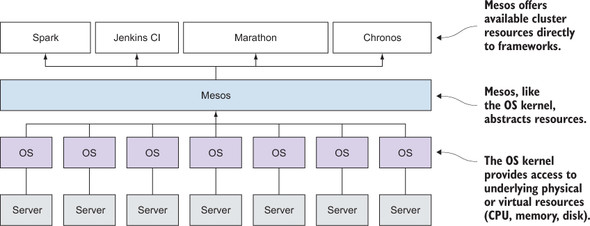Chapter 1. Introducing Mesos
This chapter covers
- Introducing Mesos
- Comparing Mesos with a traditional datacenter
- Understanding when and why to use Mesos
- Working with Mesos’s distributed architecture
Traditionally, physical—and virtual—machines have been the typical units of computing in a datacenter. Machines are provisioned with various configuration management tools to later have applications deployed. These machines are usually organized into clusters providing individual services, and systems administrators oversee their day-to-day operations. Eventually, these clusters reach their maximum capacity, and more machines are brought online to handle the load.
In 2010, a project at the University of California, Berkeley, aimed to solve the scaling problem. The software project, now known as Apache Mesos, abstracts CPU, memory, and disk resources in a way that allows datacenters to function as if they were one large machine. Mesos creates a single underlying cluster to provide applications with the resources they need, without the overhead of virtual machines and operating systems. You can see a simplified example of this in figure 1.1.
